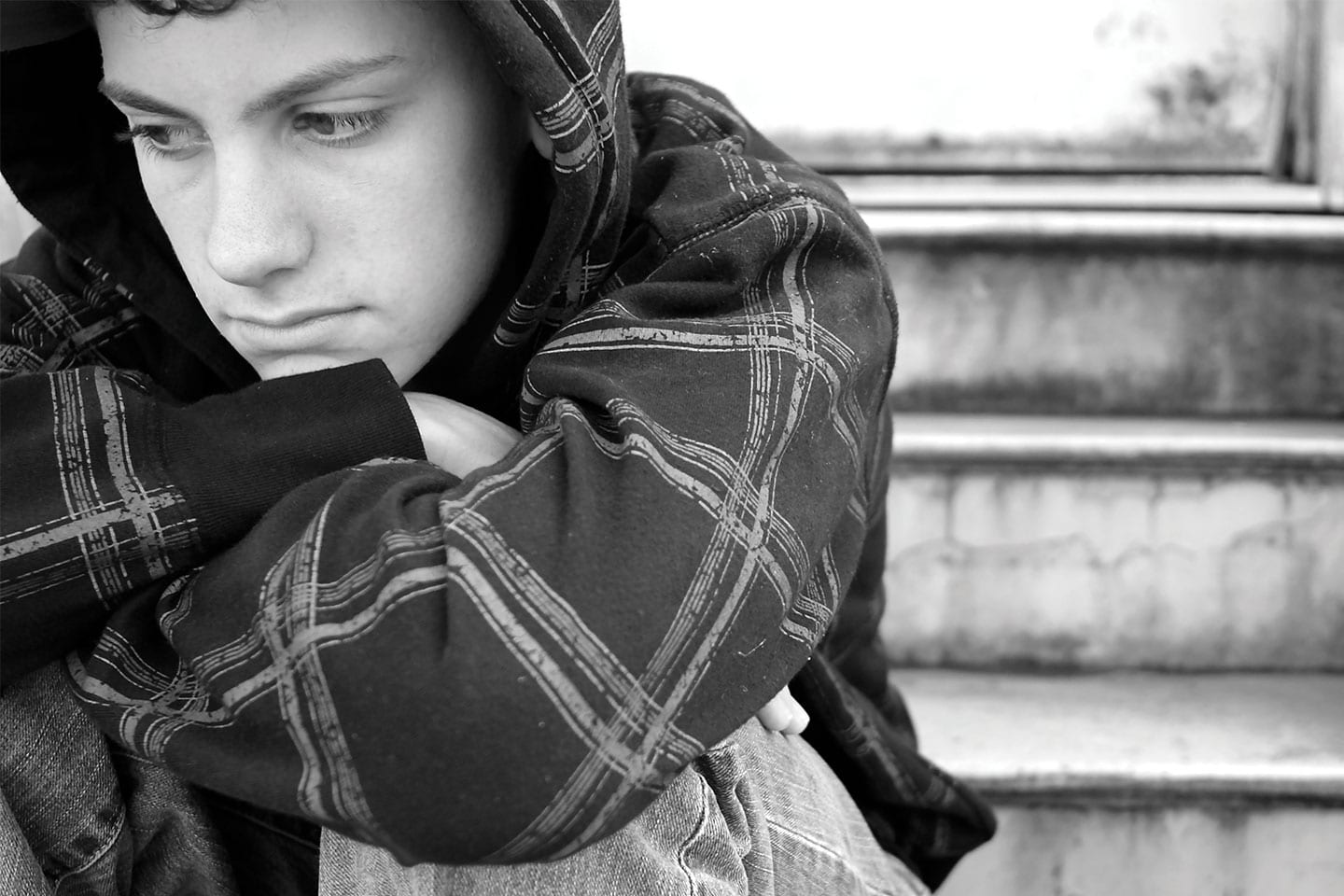“I just want to disappear.”
“You’d all be better off if I weren’t around.”
“I wish I were dead.”
Let’s face it: Growing up is hard. Adolescents encounter everything from peer pressure to trouble with friends, issues at home, and more, all before their brains have fully developed. These experiences mold them into who they are, but they can wreak havoc on their mental health during the process. At times, circumstances can feel so overwhelming that they become all-encompassing. Suddenly, there seems to be no way out.
Second only to traffic accidents, suicide is a leading cause of death among youth ages 10-24. In fact, research suggests that suicide rates are currently the highest they have been since World War II. So how can you tell if your child is at risk?
By Lucy Morris

Risk Factors
While researchers are hesitant to identify specific causes of suicide, certain factors may contribute to suicidality. In addition to previous suicide attempts or a family history of suicide, an increase in drug use and alcohol abuse among adolescents has been linked to suicide, as have other high-risk behaviors.
A recent or serious loss, whether it be a family member, friend, or even pet, can increase the risk for suicidal behavior. Other losses, like the separation or divorce of parents, losing the family home, or a breakup with a significant other, can also leave an adolescent feeling hopeless.
Those struggling with sexual orientation in an unaccepting environment are at an increased risk, as a lack of support can have serious repercussions on an individual’s mental health. According to a recent study performed by the Centers for Disease Control and Prevention (CDC), gay, lesbian, and bisexual youth in grades 7-12 were more than twice as likely to have attempted suicide as their heterosexual peers.



Counselor,
Roots Counseling Center
Bullying, which we see both in person and online, is another trigger. It can include everything from physical violence to spreading rumors, and it tends to be repeated. No matter the form of bullying, it can have lasting effects on mental health and overall well-being for both the bullied and the bully. In fact, youth who report both frequently bullying others and being bullied themselves are at the highest risk for bullying-related suicidal behavior.
Social media has made online bullying even easier over the years, as children and adults alike can hide behind their keyboards. “Bullying and shaming are even easier to experience virtually, especially since there is no face-to-face contact, so you don’t see the expression of the other person,” says Blake Feagans, a counselor with Roots Counseling Center. “Unfortunately, there appears to be a direct correlation between increased social media use and increased anxiety and depression and decreased self-worth.”
…………………………
Is there a stigma associated with asking for help?
Rachel Gearinger, the Southeast regional director for the Tennessee Suicide Prevention Network, explains that the stigma that comes with talking about suicide and mental health makes it harder for people to ask for help. “In order for people to ask for help, they first need to recognize there is something wrong and feel like the help available is something they can realistically access. Unfortunately, stigma in our larger society can put a barrier in people’s heads to keep them from moving through this process. The more we normalize seeking help to support our mental health, the closer we get to breaking this stigma.”
…………………………
The Warning Signs



Adolescent Medicine Specialist,
Children’s Hospital at Erlanger
In many situations, an adolescent at risk of engaging in suicidal behavior in the near future will display any number of warning signs. Dr. John Heise, an adolescent medicine specialist with Children’s Hospital at Erlanger, explains, “Warning signs may be obvious, for instance talking about death or suicide or making statements like, ‘What would it be like if I weren’t around anymore?’ More often though, the signs are more subtle, but show a change in behavior.”
A child may express hopelessness about the future or display overwhelming emotional distress. They may begin to withdraw from friends or social situations and may be more irritable or easily agitated. Sleep patterns may become inconsistent – whether that means sleeping more or less than is typical. You may notice your child has become apathetic – those once beloved activities are thrown by the wayside – or they start acting recklessly and making poor judgments.
Other red flag behaviors include giving away important or sentimental belongings and wearing only long-sleeved shirts and pants, which can hide potential self-harm.
Considering how much adolescents grow and change over the years, it can be easy to overlook some of the warning signs, or to write them off as typical moody teenager behavior. But even if you can’t imagine your child ever engaging in dangerous behavior, you need to pay attention and take signs seriously. “Adults often do not realize how the world is as their children see it,” says Dr. Heise. “Things that may seem insignificant to an adult are often huge in the adolescent life and psyche.”



Protecting Your Loved Ones



Regional Director, Tennessee
Suicide Prevention Network
There’s an unfortunate stigma associated with asking for help, which can prevent struggling adolescents from receiving the care they need. That’s why it’s important to be proactive with your loved ones.
If you notice any warning signs, Feagans recommends acknowledging the behavior in a non-judgmental way. “Many teenagers do not know how to share those scary thoughts and feelings, and the last thing we want to do is shame them for what they are experiencing. Shaming them proves you are not safe.”
From there, it’s all about talking and listening. “In the same way it’s uncomfortable to talk to your kid about sex, it’s uncomfortable to talk to them about suicide; however, it’s a necessary conversation to have,” says Feagans. “Do not wait for them to come to you.”
While initiating the conversation may feel daunting, you can always start out easy. “Something as simple as asking, ‘Are you okay?’ can get the ball rolling,” says Dr. Heise. “If your child can’t or won’t open up to you, then encourage them to talk to an adult they trust such as a favorite teacher, coach, relative, or church leader. If this is not helpful or possible, seek professional help through a mental health provider or medical personnel.”
Ultimately, protecting your loved ones is all about finding help at the first sign of a problem. Gearinger explains, “Research shows us the earlier we can intervene, the better the outcome. If we are going to reduce the number of adolescent suicides, we need to start the conversation about mental health and suicide earlier. Whether you see something or just have a gut feeling, there is no harm in asking how someone is doing and giving them a space to express what is on their mind. A huge myth is that by asking someone about suicide, you can plant the idea in their head. This is not true. If they say they are thinking about suicide, it is because they truly have been thinking about it. So, reach out. Connecting like this can actually protect against suicide.” HS

